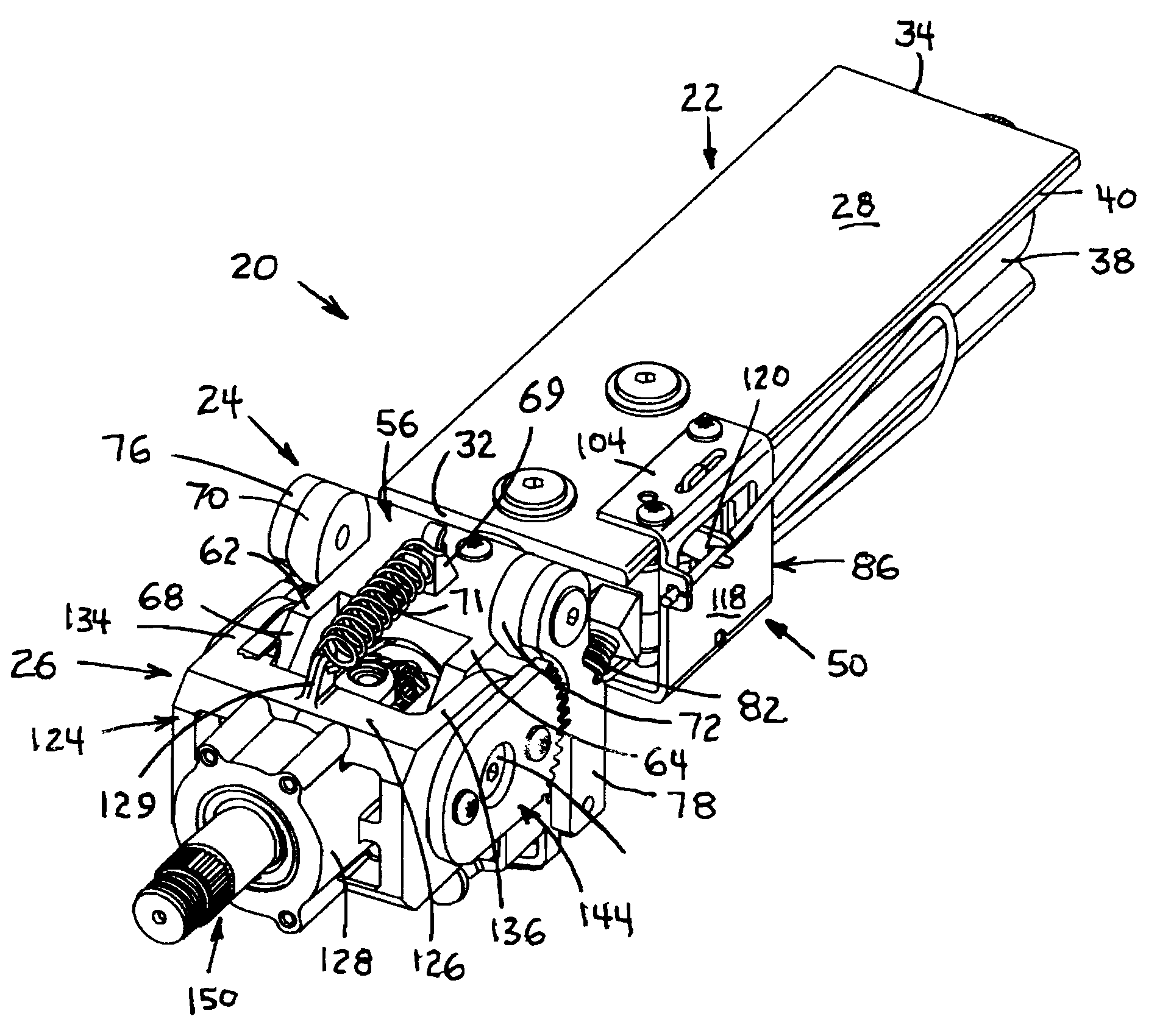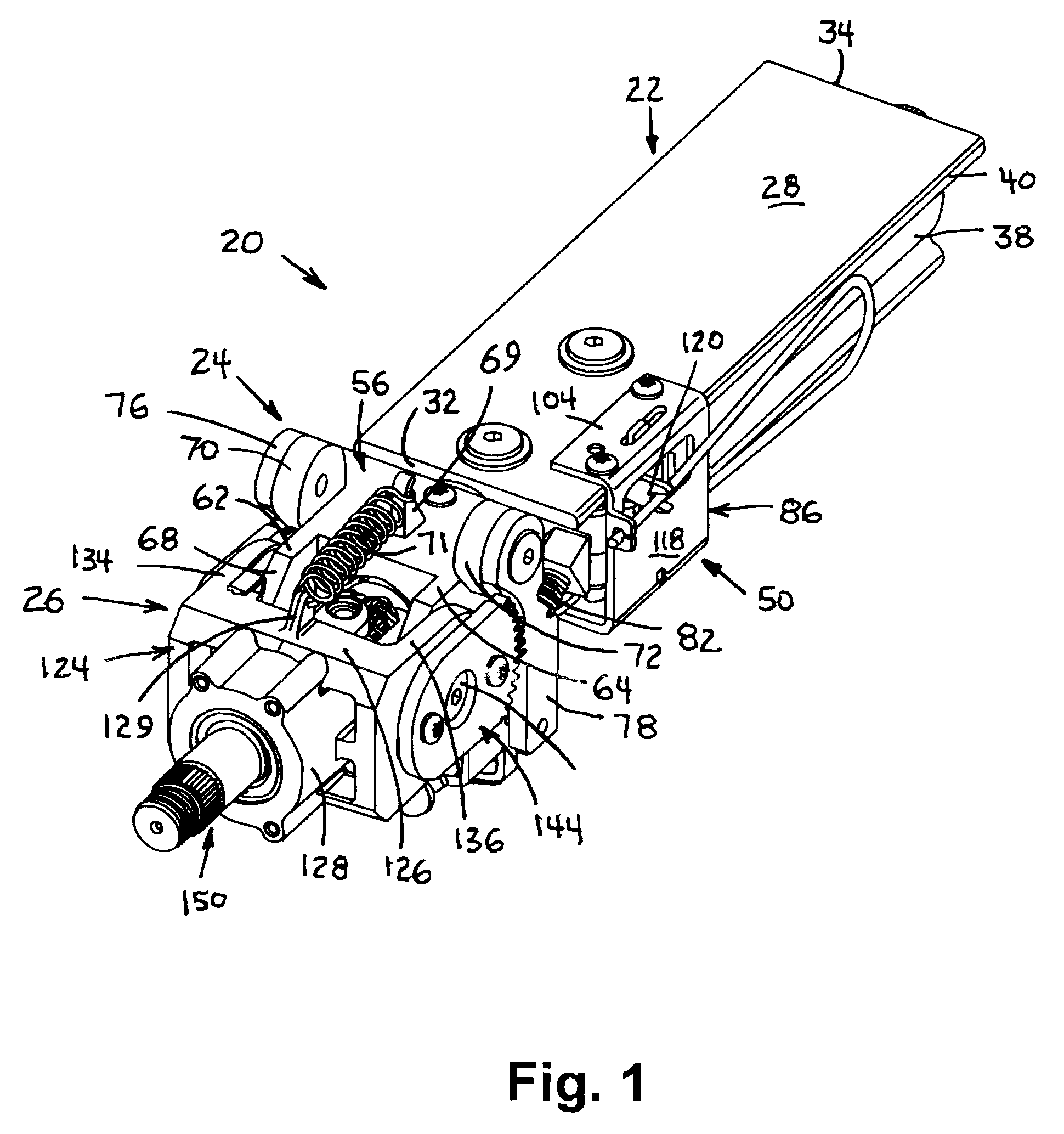Tilting and telescoping steering column assembly
- Summary
- Abstract
- Description
- Claims
- Application Information
AI Technical Summary
Benefits of technology
Problems solved by technology
Method used
Image
Examples
first embodiment
[0035]The middle member assembly 24 is shown in greater detail in FIG. 4. There it can be seen that the middle member assembly 24 may include a right circular-cylinder tubular-member 52 preferably manufactured from steel or similar high strength material and of a dimension to be received within relatively close tolerance within the longitudinal bore 30. The tubular member 52 is of a predetermined length depending in large part upon the amount of translation desired along the longitudinal axis l to provide the telescopic adjustment of the steering column assembly 20. The actual translation distance may be limited or controlled by the length of a travel limiter slot 54 formed along the length of the tube 52 and which is adapted to receive at least one bolt (not shown) passing through the lower housing member 28 and extending at least partially into the slot 54. In the preferred embodiment, two bolts are used to control, and virtually remove, any yaw that may occur as the tube 52 slide...
second embodiment
[0047]The reader is now referred to FIGS. 8 through 14 which depict the steering column assembly 220. This alternate embodiment of the steering column assembly 220 includes a lower assembly 222, a middle assembly 224, and an upper assembly 226, all of which are controlled by a locking assembly generally identified by reference numeral 228. Each of these components interacts to provide the variety of adjustable positions demanded by the vehicle user. Moreover, the physical relationship and tolerances between the different assemblies also result in the improved performance of the invention.
[0048]In the alternate embodiment, the lower assembly 222 includes a lower housing 230 having a length (l) greater than its width (w) or its height (h) and may have the general or overall form of a rectangular solid similar to that described above. The lower housing 230 preferably includes a longitudinal bore or passage 232 extending the entire length from a first end 234 to the opposite end 236 to ...
PUM
 Login to View More
Login to View More Abstract
Description
Claims
Application Information
 Login to View More
Login to View More - R&D
- Intellectual Property
- Life Sciences
- Materials
- Tech Scout
- Unparalleled Data Quality
- Higher Quality Content
- 60% Fewer Hallucinations
Browse by: Latest US Patents, China's latest patents, Technical Efficacy Thesaurus, Application Domain, Technology Topic, Popular Technical Reports.
© 2025 PatSnap. All rights reserved.Legal|Privacy policy|Modern Slavery Act Transparency Statement|Sitemap|About US| Contact US: help@patsnap.com



